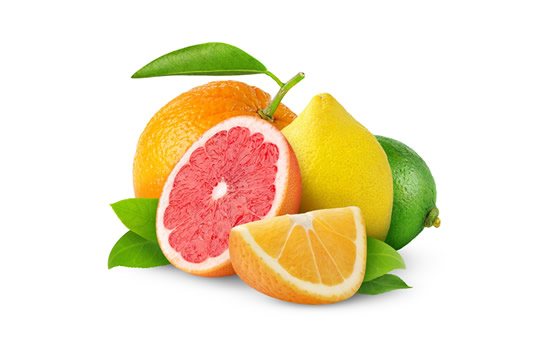Citrus fruits are high in a variety of beneficial nutrients, including thiamine and vitamins A & C.
Citrus compounds are believed to help prevent certain diseases, such as eye problems, bowl conditions, cardiovascular disease, and prevention of cancer.
Below are eight of the refreshing citrus foods:
Orange
Orange is a highly consumable fruit and popular across the world. A medium size orange can provide up to 100% of the daily vitamin C requirement. This fruit is easily eaten by itself or incorporated into baked or stir fry foods or in salads. Each orange has more than 60 flavonoids and 170 phytonutrients.
Grapefruit
Grapefruit is a further rich source of vitamin C. A whole grapefruit is able to provide at least 100% of the RDV. Plus, this fruit is high in fiber (eat the entire fruit), magnesium, calcium, niacin, thiamin, folate, vitamin, and potassium.
Also, grapefruit is appreciated for its lycopene content which is a type of antioxidant that is believed to prevent or reduce the risk of certain cancers.
Mandarins
Mandarins (also called tangerines) are a reliable source of thiamin, vitamin A and C. Each medium size mandarin holds 17% of the daily requirement of vitamin A and 100% of vitamin C. Plus, this citrus fruit is rich in dietary fiber, potassium, and calcium. Also, it is believed that mandarins have the potential to cut the risk of atherosclerosis, insulin resistance, and liver disease.
Lemon & Lime
Lemons and limes have a quite tart taste which usually means they aren’t eaten by themselves. But, these fruits are easily introduced to a variety of recipes or dishes, including dressings, sauces, salads, soups, and sweets. A ¼ glass of lemon juice has about 50% of the DV of vitamin C. Plus, these citrus fruits are loaded with limonoids. This type of citrus compound is believed to help fight-off certain cancers.
Kumquats
The tiny kumquats are among the smaller pieces of citrus fruit and usually the size of a cherry tomato. They come with an edible skin (make sure to give the fruit a thorough wash) and go well with side dishes or salads. Plus, the kumquats are a common choice for using in marmalades, jellies and jams.
Pomelo
The Pomelo has the appearance of a large grapefruit and is largest in the family of citrus fruits. The flesh of the fruit is usually a distinctive red color and taste is a bit sweeter than the grapefruit. Plus, the Pomelo is a powerful source of vitamin C with nearly 500% of the DV. Use this fruit to complement breakfast cereals.
Blood oranges
Blood oranges have a rich-taste that is much sweeter than regular oranges. It has a bright blood-colored flesh that looks quite stunning when used as a salad topping or cake decoration. These oranges contain a very beneficial antioxidant that results from the fruit red pigment (Anthocyanin). A benefit of this antioxidant is the ability to fight-off heart disease and certain cancers. A tasty use of blood oranges is to create a killer-citrus infusion by squeezing over salmon and baking.

Speak Your Mind